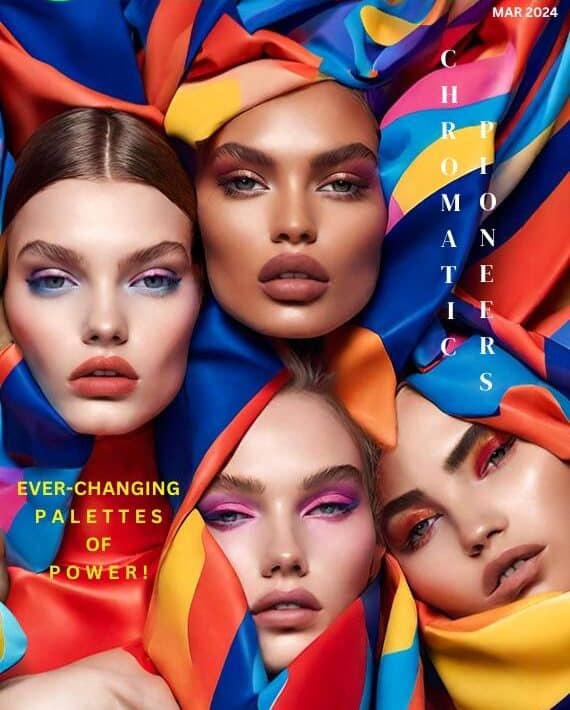The Timeless Elegance of Hijabs, Turbans and Veils: How To Effortlessly Re-Interpret Ancestral Traditions And Re-Define Your Personality For Self-Empowerment And Spiritual Renewal.

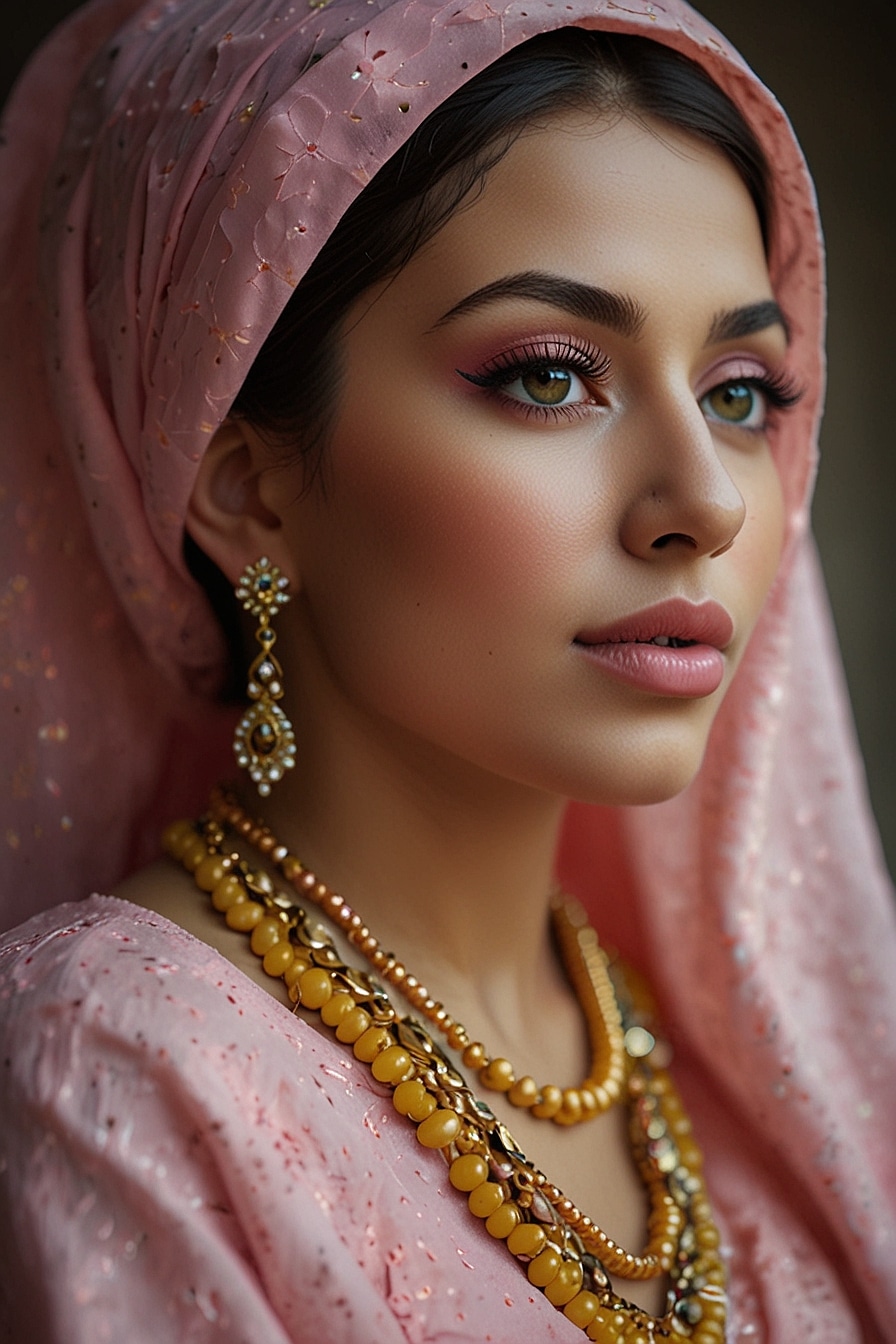
Hijabs, turbans and veils have long been revered as symbols of religious devotion and cultural identity, offering a stunning blend of tradition and modernity. These garments not only hold significant cultural and religious value but also serve as fashion statements that can be tailored to individual style preferences.
The use of hijabs, turbans and veils in general dates back centuries and is deeply rooted in Islamic tradition. These garments serve primarily as expressions of faith and modesty. The hijab, typically worn by Muslim women, is a symbol of privacy and morality. Similarly, turbans are often worn by ladies in various Islamic cultures, especially in the African continent, signifying wisdom and spiritual strength. Veils, used in many cultures as well, denote respect and dignity.
Choosing the right style of hijabs or turbans can enhance your natural features and reflect your personal taste, besides effortlessly empowering your look and creating a statement image of yourself. In this perspective, understanding your face shape – whether it is oval, round, square, elongated or heart-shaped – can help select the most flattering styles of your headpiece, while enhancing your personality. Here are a few tips you might consider:
– Oval Face Shape: most styles suit an oval face. Experiment with different wraps and drapes.
– Round Face Shape: opt for styles that add height and lengthen the face
– Square Face Shape: soft, draped styles can soften angular features
– Elongated Face Shape: keep your forehead covered while adding volume on the sides to visually shorten you face
– Heart Face Shape: balance the wider forehead with fuller turbans or hijabs at the sides.
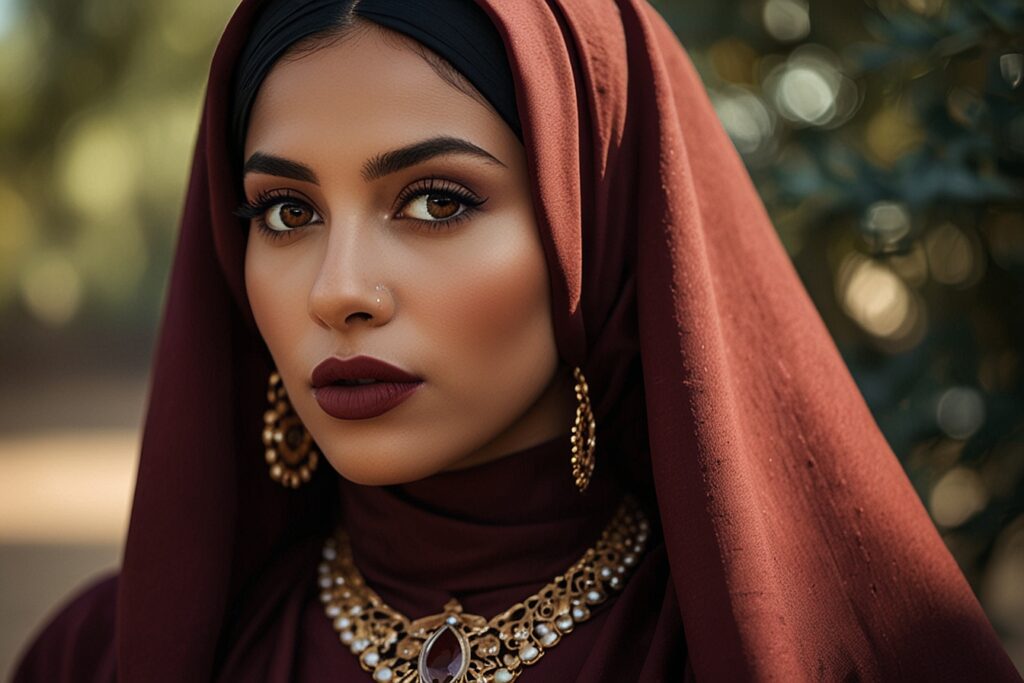
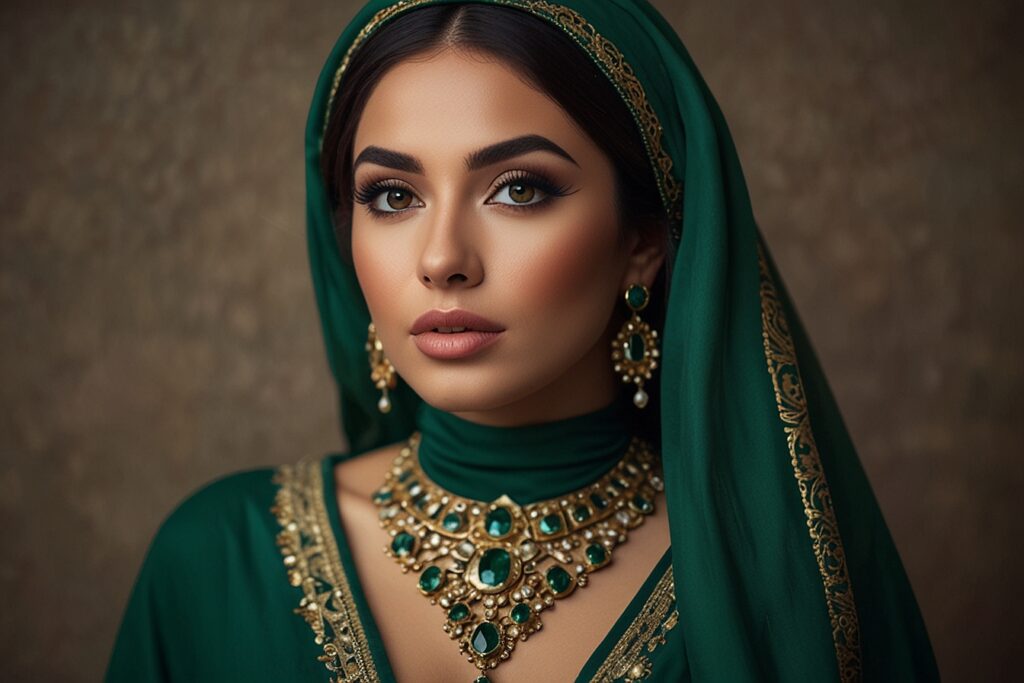
The Hijab Accessorized; Image Source: Manuela Pirola
Selecting the right colors for your hijab or turban is also paramount and can enhance your natural beauty complementing your skin tone, eye color and hair color.
When choosing a hijab, a turban or a veil, the chromatic aspect is often overlooked as ladies tend to focus on patterns and fabrics, which is important as well (as we will see later), but not enough to build up an iconic image of yourself. Hijabs, turbans and veils, like your hair, are all around the face and for this reason their color will inevitably impact the way you look. The right shades can illuminate your face, making your skin look smoother, your eyes more striking and your overall appearance more harmonious. Conversely, a mismatched color can wash you out or create an unflattering contrast on your face.
Personal Color Analysis is a method for determining which colors are the most flattering on you based on your natural features. It helps identify your dominant chromatic characteristics: are you a Warm or Cool type? Are your overall colors Soft or Clear? Dark or Light? Here you can find a few simple aspects you might consider when creating your hijab or turban styling. Please do consider that the information provided is standard and cannot replace a professional Color Analysis with an Image Expert. The topic is in fact quite complex and it should also include fundamentals of Color Psychology.
– Skin Tone: identifying whether you have a warm, cool or neutral skin tone. Warm tones are generally complemented by earthy colors such as golds, browns and olive greens. Cool tones may shine with blues, purples and cool pinks. Neutral tones, instead, can generally wear a wide range of colors.
– Eye Color: choosing shades that make your eyes pop, intensifying their color. For instance, if you have brown eyes, deep jewel tones can highlight their richness, while blue eyes might be emphasized with some greys and blues. Green eyes? Try the shades of green and purple.
– Hair Color: considering the shade of your hair can also influence how certain colors look on you. For example, brunettes may find that deep, rich colors complement their hair, while blondes might prefer pastels or lighter hues.
A well-chosen hijab or turban color can create balance and harmony in your overall look. Instead of competing with your natural features, it works with them, allowing your unique beauty to shine through. This balance is not only pleasing to the eye but also boosts your self-esteem. By understanding the impact of color on your appearance, you can make informed choices that highlight your natural beauty.
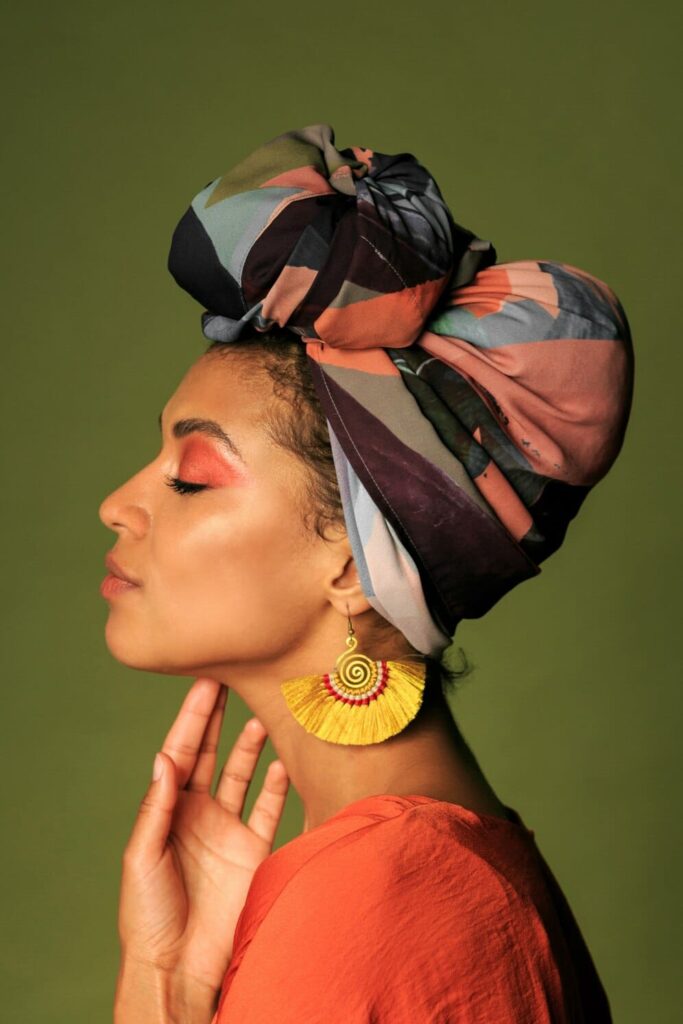
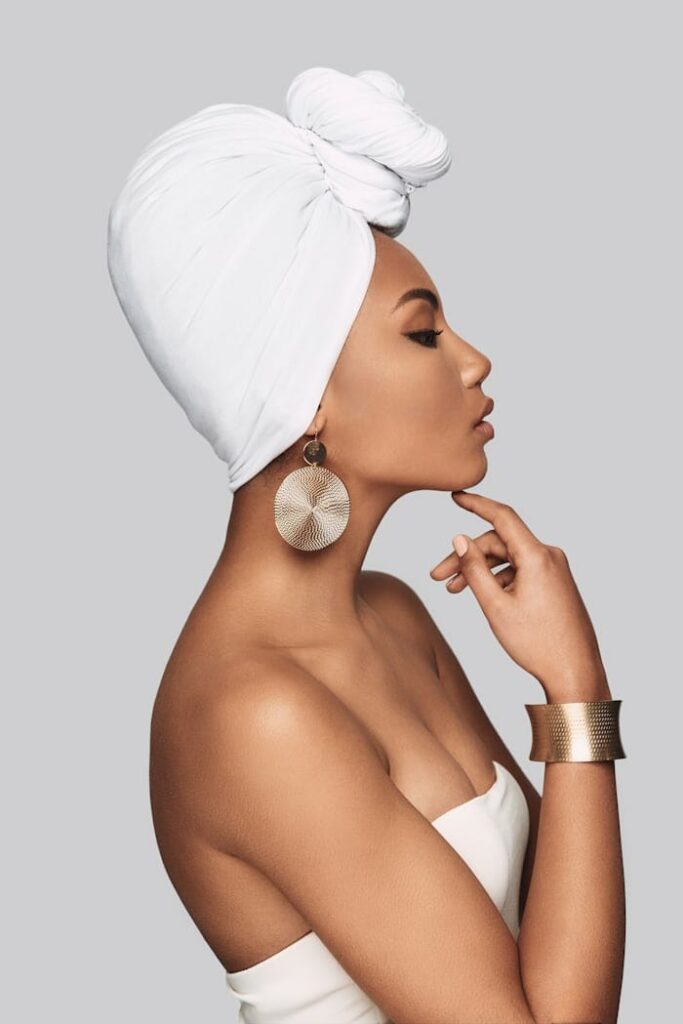
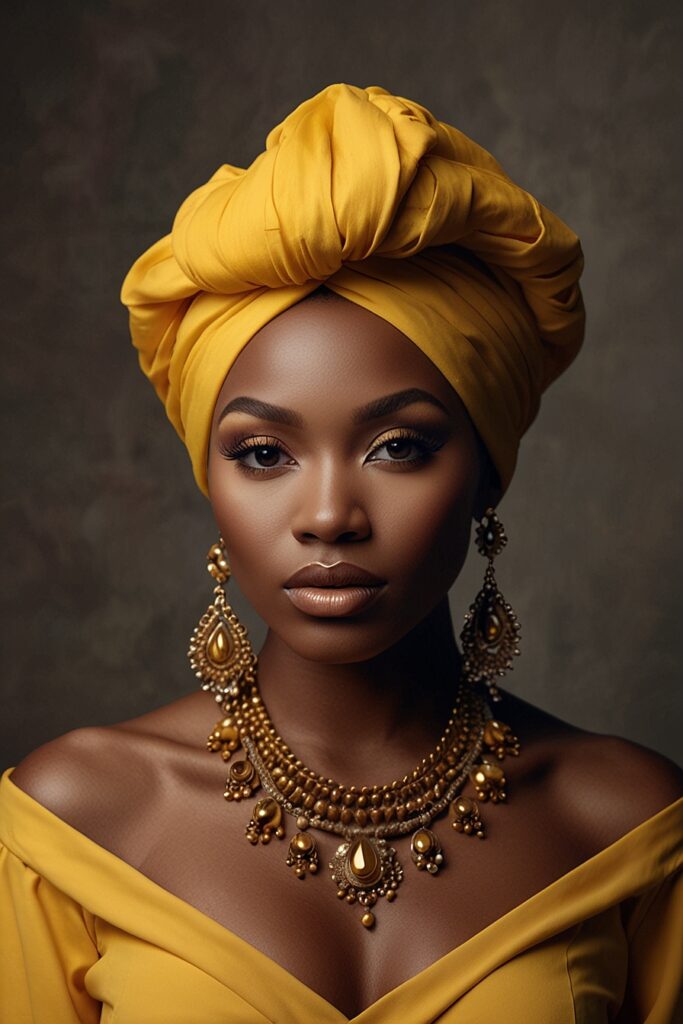
Turban Styles; Image Source: Manuela Pirola
Like we anticipated, when it comes to hijabs, turbans an veils, the choice of fabric and patterns is also crucial for both comfort and appropriateness for the occasion and in line with the climatic conditions of your area. Broadly speaking, for Casual Wear, do prefer lightweight cotton or jersey fabrics, which are breathable and comfortable for everyday use. For Formal Events, instead, opt for luxurious materials like silk, chiffon or satin and consider intricate patterns or embellishments for added elegance. Religious Ceremonies require traditional fabrics such as wool or linen, which may be preferred for their cultural significance. Wool and linen are in fact two staple materials in ancient and contemporary textiles, holding profound religious significance across various belief systems. Wool, derived from sheep, is a natural fiber revered for its warmth and durability. In many religious traditions, wool is associated with purity and divine connection, especially in the Islamic tradition. Linen, a textile made from the fibers of the flax plant, is celebrated for its lightness and breathability. Its religious significance often stems from its associations with purity and holiness.
Last but not least, accessories can beautifully enhance your hijab or turban look, adding a personal touch. Make sure you wisely choose them based on your facial features. In this case too, addressing to an Image Professional would be the best option:
– Earrings: consider wearing statement earrings that are visible beneath the hijab or turban for a touch of elegance.
– Necklaces: a delicate necklace can complement the neckline of your outfit
– Pins: decorative pins can secure the hijab in place and add sparkle
– Glasses: choose frames that enhancing your overall harmony
In conclusion, hijabs, turbans, and veils offer a canvas for creativity and self-expression while honoring tradition. By considering Face Shape, Color Analysis, Fabrics and Accessories, you can curate a look that is both meaningful and uniquely yours. It is a way for re-interpreting ancestral traditions and re-defining personal rituals. Women can now challenge their narrative, blending empowerment, individuality and spiritual renewal.
Ramadan Kareem to you all, my beautiful Ladies!




